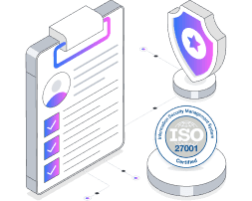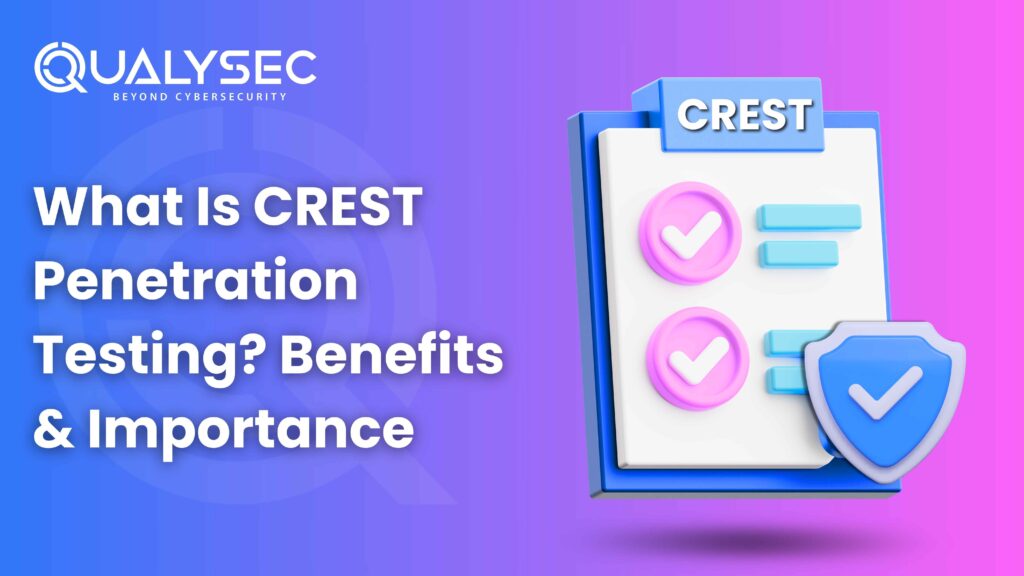What Is CREST Penetration Testing? Benefits & Importance
Five years from now, cybersecurity will face greater challenges and even higher risks. Currently, the global cybersecurity penetration testing market is worth $4.1 billion, and experts predict it will increase at a strong annual rate of 13.1% until 2033, due to more challenging cyber attacks, broader cloud use, and stronger data privacy rules. Commonly seen in Singapore but happening elsewhere in the Asia-Pacific region as well is a strong increase in the need for advanced testing like CREST penetration testing due to government support, increased digitalization, and the Smart Nation goal. Data protection and security of their infrastructure are increasingly difficult tasks for Singapore’s public and private sectors. The introduction of CREST in Singapore with the Cyber Security Agency and the Association of Information Security Professionals opens the door to establishing regular, accepted standards for penetration testing worldwide. The timing for Meta’s move is right, considering the market for Penetration Testing as-a-Service (PTaaS) is predicted to reach $2.33 billion by 2025, at a rate of 22.1% CAGR growth. The risk is significant – any data breach can cost Singaporean companies many millions in actual losses and cost them valued clients. Since then, CREST has made penetration testing the leading method for companies looking for thorough, ethical, and strong security checks. Qualysec Technologies is here to explain what penetration testing through CREST is, outline its approach, and highlight why it matters to Singaporean businesses in the coming years. What is CREST Penetration Testing? CREST penetration testing is a directed security assessment carried out by CREST-approved professionals. The goal is simply to identify and break into the systems, applications, and networks before any hackers do. Penetration testers who are certified by CREST must show that they have advanced skills, know the most recent threats, and act ethically. The system is well-defined, consistent, and follows worldwide regulatory rules. Repercussions of Not Conducting CREST Latest Penetration Testing Report Download CREST Penetration Testing Process 1. Pre-engagement At first, the steps include setting the boundaries, goals, and working conditions. Testers with a CREST certification work with others and decide which assets, for example, cloud infrastructure, payment gateways, or IoT devices, require testing and where the testing will be done. Laws and codes of practice are in place, and both NDAs and necessary permissions are granted to preserve the organization’s systems. With this approach, CREST ensures the testing follows both the goals of the business and regulations from Singapore, such as PDPA and MAS TRM. 2. Collecting Data & Using Threat Models Testers use Nmap, Shodan, and DNSdumpster tools to review what’s running on the network, its patch levels, and who has access. Organizations often perform social engineering simulations, such as phishing, to evaluate their staff’s susceptibility. Threat modeling finds the greatest attack opportunities, such as APIs left open to use and servers that have not been patched, looking at each threat’s effect on the business. 3. Testing & Exploitation People performing pen-testing try unsafe techniques such as SQL injection, poorly set cloud buckets, or weak encryption to test for potential data breaches. These techniques have the same methods as attackers to access important information. As an example, a hacker could enter a finance system by exploiting compromised employee accounts, posing risks in banking and healthcare. 4. Persistence Testing At this stage, tools are used to gauge the possible period of undetected presence. Testers will place so-called backdoors or scheduled tasks that help them replicate advanced threats. Businesses processing sensitive data must follow this step, as it sees if IDS and incident response plans really work. 5. Reporting and Addressing Concerns As the final output, you will prepare a document that sorts vulnerabilities by importance and explains how to address them. With that in mind, firms might be instructed to update against a zero-day vulnerability or enforce MFA for their services on a SaaS platform. Following the remediation, an expert checks that the problems have been solved. The final CREST certificate proves that your systems are compliant with all audits. 6. Why This Method Works for Singapore Having a mix of cloud, local, and old systems in Singapore means IT departments must handle them systematically. Using CREST penetration testing, risks are addressed with both explanation and by causing minimal disruption. Given that 67% of businesses in APAC are focusing on cloud security in 2025, this supports local companies in better defending themselves against threats such as ransomware to infrastructure in their region. Key Benefits of CREST 1. Experts in Security The people who perform CREST penetration tests have completed rigorous training and worked in the field for thousands of hours. They must earn new certifications every three years to show that their skills are up-to-date with the latest threats. 2. Improved Trust from Customers Putting a CREST mark on your data security practices, industry partners, and clients shows that you take data protection seriously and use the best practices in the field. It earns your business trust and can make it more competitive when working with partners involved in cybersecurity. 3. Satisfies the Requirements of Regulators Following CREST penetration testing greatly helps a business meet the requirements of GDPR Pentesting , ISO 27001 Pentesting, PCI DSS Pentesting, and any other mandatory security regulations locally. Having regular penetration tests and outsourcing them to a CREST-accredited company helps you prove that your information is protected. 4. Internationally Known Accreditation Although CREST began in Britain, the certification is accepted throughout the world. This means a lot to Singaporean organizations working in other countries, as it gives their global partners and clients the confidence that they use a reliable security system. 5. Latest Knowledge and Practices Thanks to further training and new information from CREST, accredited testers are aware of the latest threats and ways attacks can be made. They conduct tests following industry standards and famous frameworks to ensure the assessments are true and engaging. 6. Lower Risks and Greater Reliability Due to CREST’s strict rules and monitoring, chances for overlooked flaws in testing are extremely low,




